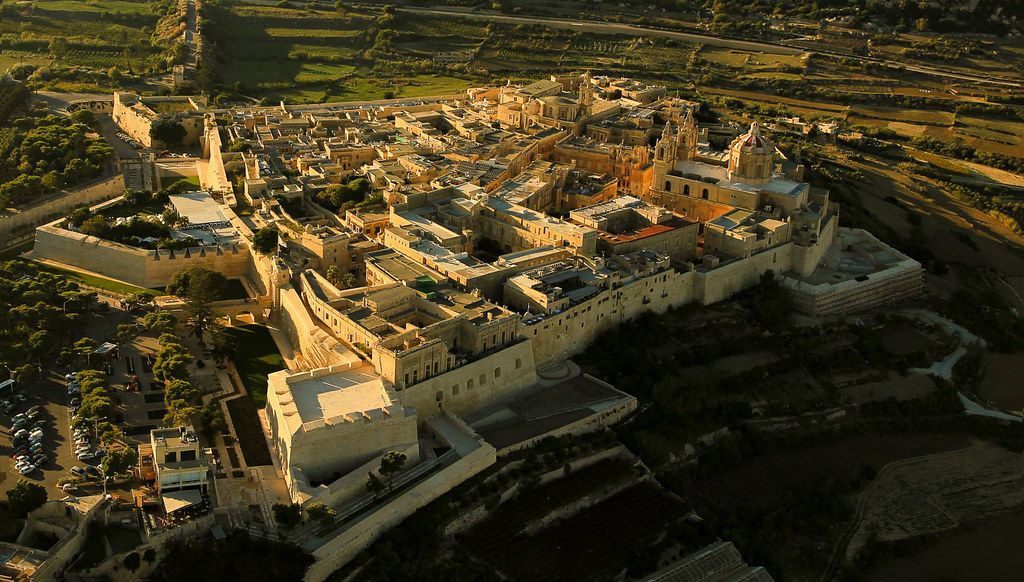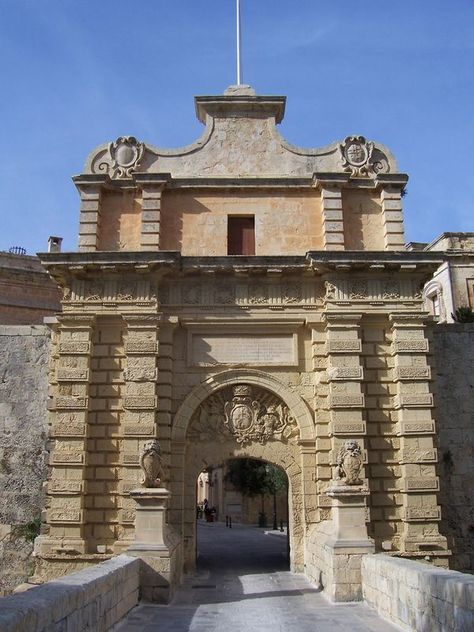
Mdina Main Page
General Info

| Country | Malta |
|---|---|
| Place Name | Mdina |
Overview
Mdina, known as the "Silent City", is beautifully preserved and full of life, with a history dating back over 4,000 years. Once the capital of Malta, this medieval city is a treasure trove of art, religion and architecture.
The narrow and windingstreets are a joy to navigate. The city is full of palaces and palaces, giving you a glimpse of its glorious past. Mdina is extremely quiet at night and offers a strangely beautiful experience.
St. Paul's Cathedral is a baroque masterpiece. The ornate facade and detailed artwork pay homage to Malta's rich religious history.
- Piazza San Publiju: a beautiful square with great views of the cathedral and the surrounding city.
- Bastion Square: known for its enchanting views of the surroundings of Mosta, Rabat and Mdina.
- Vilhenna Palace: A grand palace that now houses a Natural History Museum showcasing the area's vibrant flora and fauna.
All in all, Mdina is a fascinating city that offers a fascinating journey through time. It is a must-see for its enchanting landscape, rich history and peaceful atmosphere.
History
The ancient city of Mdina, also known as the "Silent City", is an enchanting architectural gem that whispers tales of a rich history. Cited as one of the finest examples of an ancient walled city in Europe, Mdina is a monumental remnant of Malta's rich past.
Origins: Mdina dates back to 4000 BC. Ave. BC, but the Phoenicians surrounded it with walls. Later, under the rule of the emperor, the city turned into a Roman city.
Arab era: In the 9th century, the Arabs conquered Mdina. They redesigned the city and used their architectural knowledge to make it even stronger. The name "Mdina" comes from the Arabic word "Medina" which means "city". The Arab influence can still be felt in the winding streets, in the refined Arabic motifs on the windows and doors, and in the urban landscape in general.
- Norman Conquest: After the Norman Conquest in 1091 the city underwent another transformation. The Normans improved the city walls, which have withstood the test of time and remain to this day.
- St. Knights of John: these knights further enhanced the magnificent architecture of Mdina by building palaces and religious buildings within the city walls, making it even grander.
Although the Medina may be quiet and small, its tangled history echoes in its labyrinthine streets, fascinating Baroque architecture and timeless churches that tell stories of grandeur and grace, strength and resilience.
In this forgotten city, history lurks in every corner, behind every stone, whispering the secrets of the past, revealing the treasures of past eras and continuing the glorious legacy of Mdina.
Geography and Natural Features
Geography and natural features of Mdina
Mdina, popularly known as the "Silent City", is a walled city over 4,000 years old, located on a plateau in the heart of the Maltese Islands. It is a place where history echoes in every shadow, whispering tales of the world as it was centuries ago. Mdina's geography and natural features form a compelling backdrop to its rich history.
City walls: Mdina's massive stone walls embody old-world charm and rise from the angular edges of the plateau. They offer sweeping views of the Maltese landscape, and on clear days, sight lines stretch all the way to the Mediterranean Sea. The walls have a natural defensive character, which once played a vital role in protecting the city.
Terrain: Mdina's geographical position, high above the surrounding terrain, has determined the city's unique characteristics. The plateau on which it stands creates a natural fortress that has shaped its history. The panoramic view of the Maltese countryside, with its lush patchwork of green fields and rugged hills, is a constant reminder of the city's natural surroundings.
Bastion: The Bastion of Mdina is another distinctive geographical feature. This fortified rock is a strategic vantage point with historical significance from the days when lookouts watched over the city and watched the surrounding seas and landscapes for signs of danger.
Flora and Fauna: Despite its predominantly urban location, Mdina has many natural features, including exceptional plant and animal species that have adapted to the city's unique geographical conditions. From the native Maltese wall lizard slithering across the ancient walls, to the picturesque jacaranda trees that bloom bright purple-blue flowers along the limestone streets in spring.
Mdina's geography and natural features open a window into the past, revealing insights into the formation, development and survival of the 'Silent City', which still stands proudly at the pace of modern life. >< /p>
Influence and Legacy Features
Influence and legacy
Mdina, the ancient capital of Malta, is home to a rich history and culture that continues to influence and inspire today. The legacy is palpable in the continued preservation and respect of medieval and baroque architecture, and elusive in the stories and histories that unfolded within the fortified walls, which are still woven into the fabric of Malta's collective identity.
With more than 4,000 years of history, Mdina's influence on architecture is inevitable. The unique blend of medieval and baroque styles continues to fascinate and inspire architects around the world.
Mdina's footprint also includes literature and the creative arts. He has appeared in several films and novels, enthralling a wider global audience with his unique charm and mystery.
Meanwhile, Mdina's traditional customs and folklore, passed down from generation to generation, have influenced Malta's culture and traditions, ensuring the long-term vitality of the city's historical legacy.
/li>
In short, the lasting influence and legacy of Mdina goes beyond the ancient ramparts and influences the realm of architecture, literature and cultural traditions, both local and international.
References
TrendingFan Content
So far, there is no trending fan content for this particular universe. Explore all available content and find something you might like!
